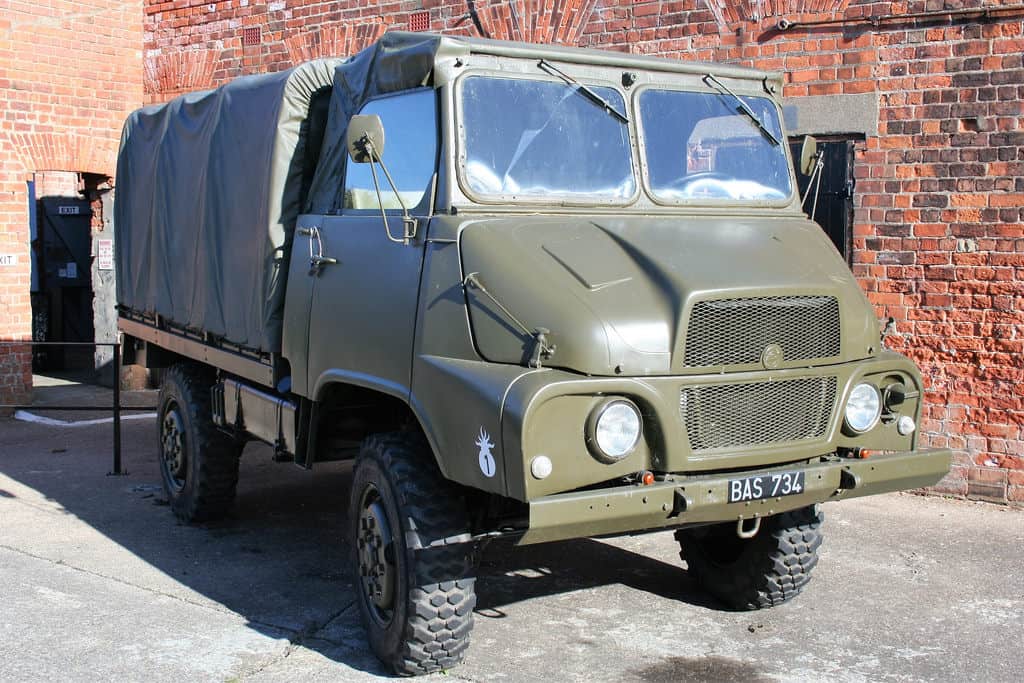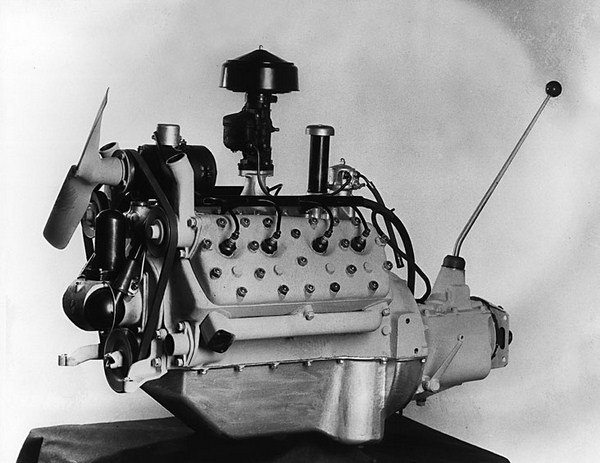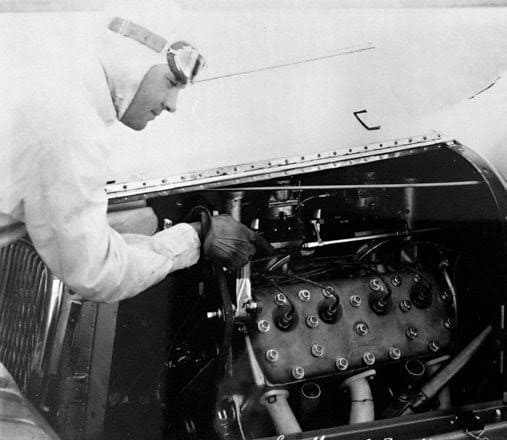Blog
Ford Flathead V-8 History for this weekend
Ford Flathead V8 Engine History
Many people mistakenly believe that the Ford flathead V-8 was the first V-8 engine. It proved to be extremely popular until the overhead valve engines arrived and was the first V-8 readily available to the masses, but it was not the first. Léon Levavasseur took out the first patent for a V-8 gasoline engine in 1902. Although not a production engine, it was utilized in several aircraft and competition speedboats of the day. Meanwhile, American motorcycle builder and aviation pioneer Glenn Curtiss installed one of his 269-ci aircraft V-8s in a motorcycle and set an unofficial land speed record of 136.36 mph in 1906.
Britain’s Rolls-Royce created the first automotive V-8, but only three were produced, in 1905 and 1906, before Rolls-Royce reverted to its trusted straight-6. In 1910 French automobile and railcar manufacturer De Dion-Bouton unveiled a 474-ci automotive V-8, which it displayed in New York in 1912. Although few were actually produced, they served as inspiration for several U.S. manufacturers.
W. R. Campbell, president of Ford Motor Company Canada, stamps the first V-8 produced in Windsor, Ontario. Note the early long-neck water pumps. Canadian blocks were produced until 1954, as were Australian blocks. (Photo Courtesy Fordimages.com)
Cadillac, for example, sold 13,000 flathead V-8 vehicles in 1914. The Cadillac was a sophisticated unit with cast-iron, paired, closed-head cylinders bolted to an aluminum crankcase, and it used a flat-plane crankshaft. Many historians consider this to be the first true production V-8 automotive engine.
General Motors was quick to follow Cadillac’s success with a flathead V-8 for Oldsmobile in 1916. The next year saw Chevrolet follow suit with a 288-ci engine for its Series D autos. When Chevrolet became part of General Motors in 1918, however, its V-8 was discontinued in favor of more economical engines.
Across town at Highland Park, Henry Ford had been experimenting with V-8 engines as early as 1922 (he didn’t like to follow the competition), but by 1928 he had decided, “to go from a four to an eight, because Chevrolet is going to a six.”
Ford engineers gathered up the competitors’ V-8s, including one of their own Lincolns (Lincoln had introduced a V-8 in 1921, the year before Henry Ford purchased the company), but they were complicated assemblies with separate cast barrels bolted to a crankcase. Ford wanted something much simpler for the new car he was developing to replace the Model A. Ford had been able to cast the Model T cylinders and crankcase en bloc (that is, in one piece), and he wanted the same mono construction for his V-8.
To begin, Ford engineers came up with two designs, one of 299 ci and another of 232 ci designated Model 24, which Henry eventually chose. The first engine ran at the beginning of 1931, and soon more were assembled and installed into Model As for testing.
The first mass-produced monobloc V-8, with a cam-driven distributor and integral coil, went into production on March 9, 1932. (Photo Courtesy Fordimages.com)
Eventually known as the Model 18 (1 for first and 8 for, well, eight cylinders), the new Ford V-8 was unique. In addition to the revolutionary, one-piece casting, Ford wanted the exhaust passage running through the block for quick warm- ups because it gets cold in Detroit. A quick warm-up notwithstanding, Ford demanded that his engineers use existing Model A water pumps to save development and tooling costs. He wanted a thermosyphon system, whereby the pumps acted only to accelerate the flow of water.
A thermosyphon system acts on the principle that hot water seeks a higher level than cold water. Consequently, when the water reaches approximately 180 degrees F, circulation commences. The
water flows from the lower radiator outlet pipe, up through the water jackets, into the upper radiator water tank, and down through the tubes to the lower tank to repeat the process.
Unfortunately, because of Ford’s demands, the V-8 suffered overheating problems until the 1937 redesign. Ford also wanted to eliminate the gears used to drive the distributor. Rather, he wanted the distributor bolted to the front of the block and driven directly by the camshaft, which itself was gear-driven and located above the crank. Ford did not want to give up the Model A’s gravity-fed fuel system. However, he had to relent and have a fuel pump that would suck fuel from a rear-mounted tank.
Growing Pains
Although the Ford flathead V-8 was produced virtually unchanged in concept from 1932 to 1953, it wasn’t an instant success. It was put into production perhaps too quickly, and there were numerous problems. Nearly all of the first 2,000 engines needed their cams, valves, valve-guides, and front covers changed. The next 2,000 also needed repair, and most of the first 4,250 cars assembled were used as demonstrators and not sold to the public. Many cars were fitted with the more reliable 4-cylinder engine. Teething troubles aside, Ford produced 212,238 V-8s between production start-up in March 1932 and December 1932.
This cutaway engine was photographed on May 12, 1932, for display in France. Thank goodness for the French and their long association with the flathead. (Photo Courtesy Fordimages.com)
Although not immediately adopted by racers, a few flathead Ford V-8s appeared at Indianapolis. Chet Miller drove this nice roadster, entered in the 1934 race by the Bohn Aluminum & Brass Company. It had what was undoubtedly the first flathead V-8 speed equipment: Bonalite aluminum heads and a brace of Stromberg 97s sideways atop a Don Sullivan intake. Apparently it produced 140 hp and achieved 109.252 mph, but it sailed over the wall on the 11th lap. (Photo Courtesy IMS Photo)
All domestic V-8 engines were produced at Ford’s River Rouge Plant, southeast of Detroit, and shipped to other assembly plants. Eventually, engines were built in other countries, including Canada and Great Britain. Until 1941, all Rouge-produced V-8s were painted Ford engine green before machining. Stamped parts were painted black, and cast-aluminum parts were unpainted. Colors changed over the years, so do not use engine color as a guide to the date of manufacture.
There were problems with the fully floating main bearings and lubrication system, and throughout 1932 a flow of factory service letters detailed fixes. (“Fully floating” means that not only did the rods rotate on the bearing, but the bearings also rotated on the crank; consequently, all three components were freely, or fully, floating.) Excessive oil consumption was a problem. Some cars used a quart of oil every 50 miles. The dipstick was made 1 inch short to prevent the public from operating cars with insufficient oil. In fact, between 1932 and 1935, five different oil indicators were used with various pan designs.
Piston wear was another issue. Early pistons, from 1932 to 1935, were aluminum alloy, but in 1935 steel dome pistons were put in limited use. They were standard on all engines from April 1936 until 1938.
Because the water pumps were located in the cylinder heads, they supposedly pulled heated water from the block (but were really sucking hot air). Because there were no thermostats, the engine overheated. Consequently, a new four-blade fan, larger pulley, and larger radiators were introduced, and more louvers were punched in the hood, increasing the number from 20 to 25 (the last louver was closed off). However, Henry Ford ignored the real reason for overheating: the water pump’s location.
Despite its 65-hp rating, the 221-ci V-8 was not initially popular with the racing fraternity, which preferred the tried-and-tested T and A 4-bangers. Meanwhile, Ford continued refinement: New for the 1933 Model 40 were lightweight aluminum heads that allowed for an increase in compression ratio from 5.5 to 6.3:1. In addition, a limited production of engines included Holley carbs.
By 1934 most of the teething problems had been remedied, and a good V-8 could produce 90 hp, return about 20 mpg, and hit 90 mph. In the hands of speed merchants, it could go much faster. By the end of 1934, Ford had produced 1,352,202 V-8 engines.
In 1935 the V-8 block was significantly changed to accommodate flow-through, or positive crankcase ventilation. The new block was given the prefix 48 for its part number. Domed pistons were installed, and new casting technology allowed for a cast-alloy steel crank to replace the earlier forged cranks. The year 1935 was also significant because the 2 millionth V-8 car rolled off the production lines. The following year, the 3 millionth was produced. Also new for 1936 were shell-type main bearings, replacing the previous poured white-metal Babbitt bearings. A more economical dual-throat Stromberg 97 carb replaced the Detroit Lubricator, and a new fuel pump was introduced. That same year, Ford applied for a license to build a two-seater light air- plane powered by an aluminum V-8; 10 of these were reportedly built.
Surviving the Great Depression
The big change came in 1937, when the water pumps were finally moved to the upper front of the block (the inlet side of the system), thus drawing cool water from the radiator rather than trying to suck hot water out of the block. The water outlets were also moved rearward, to the center of the head. Some early versions had blanking plates on the block. The engine, which now produced 85 hp, was designated V-8-85. Some later catalogs, however, erroneously listed it as producing 90 hp.
Vic Edelbrock was one of the first to see the potential of the speed equipment business. He experimented with his own parts even before World War II. Here’s a Bay Area hot rodder with Edelbrock heads and intake with three deuces. (Photo Courtesy GhostracksUSA.com)
Also new in 1937 was the compact version of the V-8, the V-8-60. Known as the “thrifty sixty,” this 60-hp V-8 was a mini version of the V-8-85 and returned 25 mpg; it was Henry’s answer to requests for a six. It caught on with midget racers and in some overseas markets, such as France and Great Britain, where there was a horsepower tax. However, it never really found favor in the United States, where it was underpowered for the weight and size of the average car. It was discontinued in the United States in 1940.
As the world struggled out of the Great Depression the initial problems with the V-8 were gradually eliminated. Ford was able to increase production as he had with the Model T and, to a lesser extent, the Model A. He unwittingly gave auto racers access to a cheap, high-performance engine that at last was attracting the attention of the speed merchants.
One of the first to see the potential was Vic Edelbrock, who purchased a V-8 Deuce Roadster in 1938. It became his daily driver, his test bed, and his lakes racer. Fitted with 21-stud cast-iron Arco milled and filled Denver heads, it sported a Winfield cam, a Thickstun manifold, Sandy’s headers, and dual ignition. It was the portent of a burgeoning post–World War II industry. By the end of 1937, Ford had produced 4,438,368 V-8 engines.
Ford announced another block modification for 1938. This was, of course, big news. It changed from 21- to 24-stud cylinder heads with 14-mm spark plugs. The main bearing sizes were also increased. Due to the slow introduction of the 24-stud block, the 1937 block assembly was continued until June 1938. (Until the introduction of the 24-stud block, Vic heads had been interchangeable left to right, right to left. With the 24-stud pattern, heads were no longer interchangeable.)
In 1939, the Mercury brand was introduced to fit between the low-priced Ford and the high-end Lincoln. Although Ford stayed with the 3.0625-inch bore, the Mercs had a 3.1875-inch bore for 239 ci. The Merc version of the flathead also had larger-diameter crank bearings, heavier rods and crank, and other strengthened components.
In 1939, the Mercury brand was introduced to fit between the low-priced Ford and the high-end Lincoln. Although Ford stayed with the 3.0625-inch bore, the Mercs had a 3.1875-inch bore for 239 ci. The Merc version of the flathead also had larger-diameter crank bearings, heavier rods and crank, and other strengthened components.
Building Up to the End
Because of World War II, very little changed from 1941 onward. However, as a result of Ford’s engineering developments during the war, the V-8 saw some minor but significant refinements. In addition, the new Model 59A engine was used in identical forms in both 1946 Ford and Mercury models. New tri-alloy bearings (derived from aircraft) combined with higher-octane fuels resulted in a rise in compression ratio to 6.8:1 and an increase from 90 to 100 hp. Also new were four-ring pistons, aluminum cam gear, and a higher-capacity oil pump; it all contributed to a much-improved powerplant. (The 1932–1948 cam gears were cut in the opposite direction as 1949–1953 gears. Be careful not to buy the wrong set for your rebuild.)
Barney Navarro, who started in the performance business machining Weiand speed equipment, began his own business in 1947. He improved on everything his hands touched and was a pioneer in the evolution of the performance flathead. (Photo Courtesy H&H Flatheads)
Barney works on the 1927 Ford Roadster that he raced at the dry lakes. It sports his cast-aluminum dual intake manifold and finned heads. He also experimented (successfully) with mixing alcohol and oxygen. (Photo Courtesy H&H Flatheads)
A rare shot of the French military Simca V-8. It’s similar to an 8BA in that it has thermostats in the heads and an angled distributor with an external coil, but it retains the integral bellhousing and a cast-aluminum pan. (Photo Courtesy Stephan Szantai)
Barney, seen here at Los Angeles’ Carrell Speedway with Tom Beatty and George Pounden (right), was one of the first, if not the first, to bolt a GMC blower atop a flathead. Four Stromberg 97s fed the quad-belt-driven 3-71. (Photo Courtesy H&H Flatheads)
Of course, the end of World War II saw thousands of returning U.S. servicemen looking for work and excitement. Many, including Barney Navarro and Al – Sharp, found what they were looking for, building speed equipment and racing the flathead Ford V-8. A $40 billion industry carried on by men such as Mike Herman at H&H Flatheads was being born.
In 1948, the V-8 fitted to Mercury automobiles was given a 4-inch-stroke crank that resulted in 255 ci. Ford engines retained the 3.75-inch stroke for 239 ci. Many other changes were made, some obvious and some not. The heads were now held down with bolts rather than studs and nuts. The water outlet fittings were moved from the middle to the front corner of the head. A major change was a new distributor, still driven from the cam but now through a shaft mounted at right angles to the engine’s axis. Also, the bell-housing was no longer an integral casting with the block. Instead it was a bolt-on piece.
Internal changes included straight-stem valves with one-piece guides. In general, these later Ford engines were commonly referred to as 8 BAs and their Mercury counterparts as 8CMs. Later, 1952–1953 Fords were referred to as EABs while the Mercs were EACs. These engines did not have the hardened valve-seats like the earlier engines. The markings were usually cast in the head.
Ford also introduced a large displacement 337-ci version in 1948, primarily for the truck market. However, when Lincoln was unable to produce the V-12 it wanted for its 1949 model, the 337 V-8 was adapted. In 1952, the Lincoln Y-block replaced the 337. Unfortunately, the 337 is not a great-looking engine and never found much favor outside the restoration market.
For the 1952 Ford passenger car model year, the company introduced a new overhead valve (OHV) Mileage-Maker 6-cylinder. Developing 101 hp, the OHV 6 outshone the V-8. Consequently, Ford increased the V-8’s compression ratio to produce 110 hp. Nevertheless, the writing was on the wall, and 1953 was the last year of the flathead Ford V-8 in the United States.
After 21 years of continuous improvement and production, the venerable Ford flathead V-8 ceased production. Well, in the United States at least. The flathead design was produced in Canada until 1954. It was licensed to a French manufacturer for use in the Simca brand until 1961, in Brazil until 1964, and until 1990 in the Simca Unic Marmon Bocquet military truck.
I had one of these engines and put it in my Model A Roadster back in about 2006.
Many Moons ago but I have my 1928 AV8 here and wanted the 1940’s look and feel to it, my reasoning is that, I grew up by the ww2 runways of the USAF and wanted to use original parts to the Roadster, that way it will not only look the same but- I will experience exactly what they did after the war.
Love this ride and even though it has its hiccups, I wouldn’t want it any other way to be honest.
Mine has a 39 Ford Mill and Gearbox, but plans for some more Hop Up parts later, the Edelbrocks are fine and run Two 97’s.






















